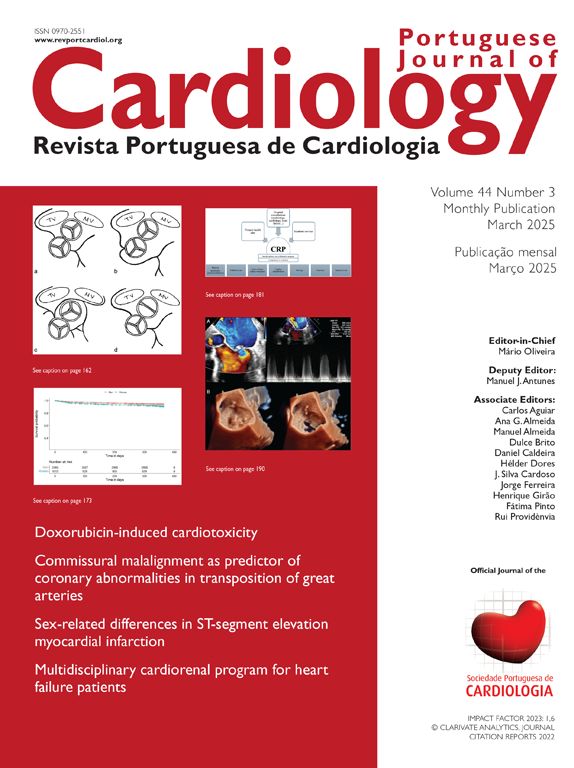Levosimendan is an inotropic drug characterized by three mechanisms of action: positive inotropy, vasodilation, and cardioprotection. It is currently recommended in hospitalized patients with decompensated heart failure (HF), especially if there is evidence of low cardiac output (CO) and organ hypoperfusion, as a bridge to mechanical circulatory support or heart transplantation, or as a palliative therapy (class of recommendation IIb, level of evidence C).1 Intermittent long-term use of levosimendan pulses (repeated low doses) may be also considered in outpatients to improve functional class and quality of life (class IIb, level C).1 Randomized trials have generally failed to provide compelling evidence that inotropes improve survival in HF patients, although they are an essential part of HF therapy, improving symptoms and quality of life, and potentially reducing HF hospitalizations, all important endpoints in this scenario.
It is well known that a 24-hour levosimendan infusion in hospitalized HF patients improves their hemodynamic status. Prior studies reported that the maximum effect of 24-hour infusion on pulmonary capillary wedge pressure (PCWP) and CO occurred within 24 hours, the estimated duration of the decrease in PCWP was 7–9 days, and the increase in CO lasted for 12–13 days.2–4 Also importantly, in hospitalized patients a clear and consistent relationship was documented between levosimendan dose and hemodynamic response. At 24 hours, all doses produced significant decreases in PCWP, while higher-dose infusions (0.4 and 0.6 μg/kg/min) produced significant increases in CO.2
However, there are no data available on the hemodynamic effects of levosimendan pulses in the outpatient setting. The LION-HEART and LAICA trials,5,6 both of which support the use of levosimendan in the outpatient setting, did not report hemodynamic data.
Remote invasive monitoring using the CardioMEMS™ system (Abbott Scientific, Atlanta, GA, USA) enables daily ambulatory assessment of pulmonary artery pressure (PAP) and CO.7 PAP measurements using CardioMEMS™ show a high correlation with PAP obtained using a Swan-Ganz catheter, still the gold standard for hemodynamic monitoring. diastolic PAP (dPAP), the target parameter of remote monitoring using the CardioMEMS™ system in most centers, is an adequate surrogate for PCWP, and can thus enable titration of diuretic and vasodilator drugs, reducing pulmonary venous and capillary pressure. Baseline dPAP and changes in PAP are also prognostic markers, predicting HF events.
So, why not use CardioMEMS™ data to assess the hemodynamic effects of a periodic infusion of levosimendan in ambulatory advanced HF patients?
In this issue of the Journal, Teixeira et al. present the results of a single-center prospective study8 in which they used a levosimendan protocol that was previously described by the same group (six-hour sessions every 14 days),9 in an outpatient sample of advanced HF patients (n=3 patients, all in Interagency Registry for Mechanically Assisted Circulatory Support [INTERMACS] level 4, mean ejection fraction [EF] 28±7%, initial mean N-terminal pro-B-type natriuretic peptide [NT-proBNP]: 12762±4993 pg/ml) across 25 outpatient sessions.
The authors found that there was a modest but significant reduction in dPAP the day after levosimendan infusion compared to baseline (day prior to infusion) (24.1±4.1 vs. 21.6±2.9 mmHg). Thereafter, dPAP stabilized and remained significantly lower up to day 10, in the absence of changes in diuretic or vasodilator therapies. There were no significant differences in systolic PAP (sPAP), mean PAP (mPAP), heart rate, CO or stroke volume at any timepoint analyzed, but there was a nonsignificant increase in CO with a peak on day 6 (3.8 vs. 4.0 l/min). Although the reduction in dPAP was relatively modest, there was a significant clinical benefit, as shown by an improvement in New York Heart Association (NYHA) class in two patients, higher mean peak oxygen uptake and lower mean NT-proBNP. There were no HF events during this period.
This is the first study to assess the day-to-day hemodynamic effects of levosimendan infusion in the outpatient setting using the CardioMEMS™ system, and provides valuable insights into the mechanisms underlying the clinical improvement following levosimendan pulses. The results point to a later peak in CO compared to 24-hour infusion, which may occur in the following days. The reduction in dPAP was sustained up to day 10 after the infusion, which is consistent with the reported duration of the effect on PWCP of 24-hour levosimendan infusion. The observed effect of levosimendan on dPAP supports the scheduled period of 14 days between infusions, questioning the potential benefit of reducing the scheduled reinfusion interval to 10 days. As stated by the authors, some results, particularly the lack of difference in CO, sPAP and mPAP, may have been affected by the low sample size and the fact that most sessions (17/25) were performed in only one patient. In addition, patients received predefined doses of levosimendan without uptitration, which fulfills the requirements of a dose–response study but leaves open the question whether higher levosimendan dosages would improve CO more significantly, with consequent higher clinical benefit.
Finally, on the subject of inotropes in advanced HF, there are many questions still to answer. Improvements in short-term hemodynamics have not to date translated into clear longer-term mortality and morbidity benefits.10 It is possible that the benefit from inotropes may be restricted to some sub-phenotypes of HF only, and clearly the CardioMEMS™ system could help to determine which of those patients will benefit and those who will not, based not just on EF, NYHA class or NT-proBNP, but also on important hemodynamic (and prognostic) parameters such as PAP, PCPW and CO.
This elegant work should serve as a basis for larger studies in this field, helping in the difficult daily task of treating patients with advanced HF, with the ultimate aim of reducing morbidity and mortality.
Conflicts of interestThe author has no conflicts of interest to declare.



